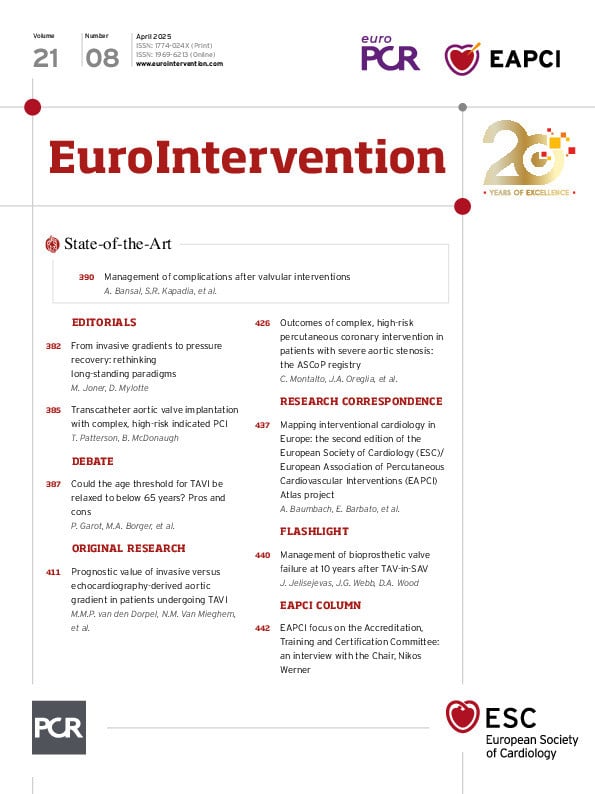The management of severe aortic stenosis (AS) with concomitant coronary artery disease (CAD) is one of the most challenging questions posed to the Heart Team. Once the decision for aortic valve intervention is made, which patients should undergo revascularisation and when this should be performed remain open to debate1.
Concomitant CAD and AS is present in more than half of the transcatheter aortic valve implantation (TAVI) population and is associated with worse outcomes than AS in isolation. Such patients tend to exhibit more comorbidities, have challenging vascular access and reduced left ventricular function. The ACTIVATION trial failed to show any benefit from pre-TAVI percutaneous coronary intervention (PCI), but it did show a significant increase in bleeding in the comorbid TAVI population2. NOTION-3 demonstrated that in a less comorbid population, pre-TAVI PCI in patients with single vessel disease reduced the rate of post-TAVI urgent revascularisation3. However, these were patients with predominantly single vessel CAD, with significant left main stem (LMS) disease excluded.
Armed with this evidence, the decision to perform PCI often resides with the TAVI operator, taking...
Sign up for free!
Join us for free and access thousands of articles from EuroIntervention, as well as presentations, videos, cases from PCRonline.com




